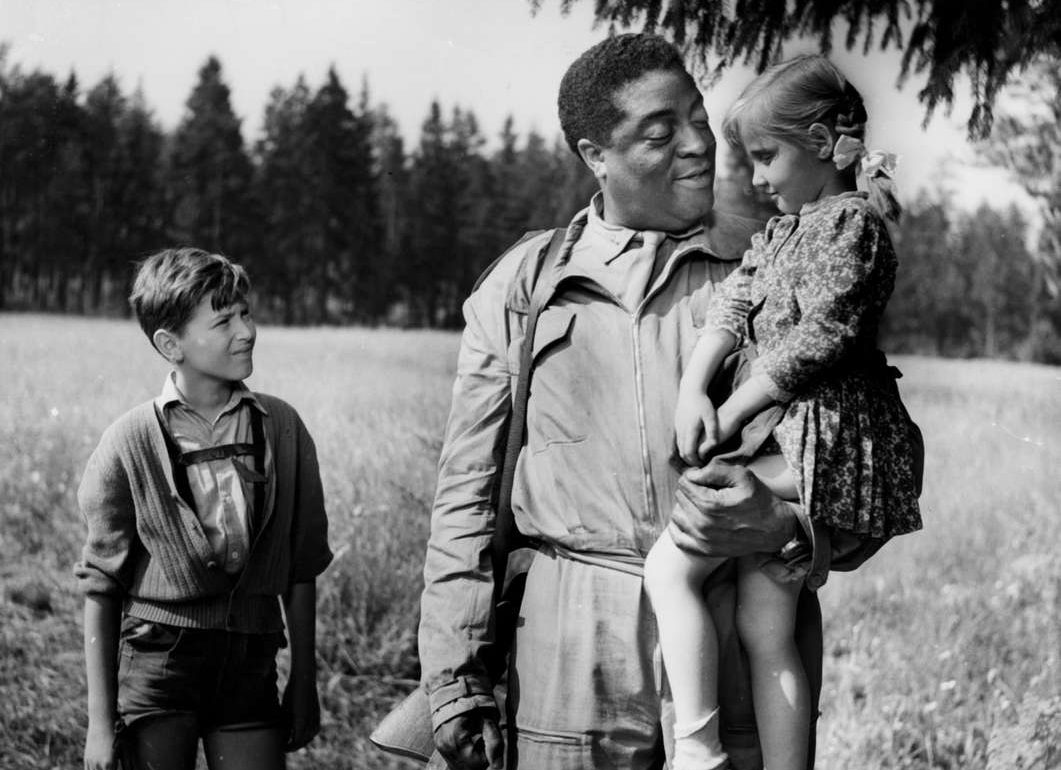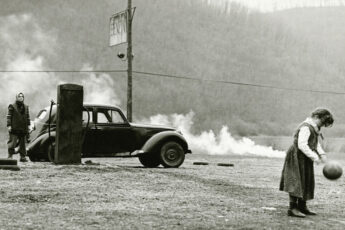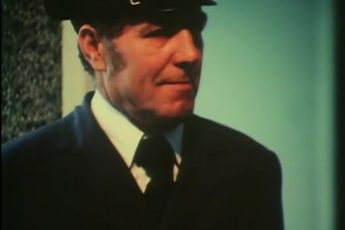Paradise Lost
France Štiglic’s Valley of Peace (Dolina Miru, 1956)
Vol. 66 (Summer 2016) by Clarence Tsui
Of the myriad programs unfolding on the Croisette in May every year, Cannes Classics has always been the ultimate fount of old-school cinephilia. While the clamor for the new and the now whirls downstairs on the tapis rouge, the Salle Buñuel – the cinema on the fifth floor of the Palais des Festivals – is host to an unfailing stream of artistic and historical milestones. Here, each and every of these rediscovered and restored cinematic gems invariably arrives with stirring or quirky anecdotes aplenty.
Even then, France Štiglic’s Valley of Peace stood out from this year’s selection. Not even the most imaginative screenwriter or political hack could have come up with the Cold War-set back story of the 1957 film’s inception, production and reception. It began with a Yugoslavian writer sitting down to pen a war movie set in North Korea; it ended with the final, finished film – now set closer to home in Slovenia – ushering in a first-ever award for an African-American actor at Cannes. Meanwhile, the filmmakers opted to – and were allowed to – secure a final cut with its pro-party/partisan propaganda toned down; in fact, the state studio actually produced a longer, “more spectacular” version for international release (five years later, in 1962) with the apparently more accessible title of Sergeant Jim.1
As if rounding all this off in a cycle, it’s this “American version” which eventually formed the basis for the restoration of the film,2 which will be screened on August 25 in Ljubljana as a central facet of the country’s celebration of its 25th anniversary of independence. All these twists and turns make for interesting copy, of course, but the film also reflects the complex social and political machinations with which an authoritarian state adjusted its founding myth as liberalization beckoned. And Valley of Peace is an artistic marvel too. A subtle and symbolic reflection of the devastation of war through the journey of a grounded US pilot and two local children through a battle-ravaged land, the film is a showcase of the nuanced, humanist filmmaking Štiglic also delivered in his other two Cannes competition titles, his first feature On Our Own Land (Na svojizemlji, 1948) and the Croatian-language The Ninth Circle (Devetikrug, 1960).
But what was a demobilized US soldier doing in a mid-1950s Yugoslav film production anyway? John Kitzmiller was no ordinary GI Joe when he was cast for Valley of Peace: choosing to remain in Italy after the Second World War – during which he served in the Corps of Engineers – Kitzmiller had already starred in over 20 Italian productions by the time he arrived in Slovenia. Making his debut in 1947 in Luigi Zampa’s To Live in Peace (Vivere in pace), he attained star status3 in his adopted home the next year with Alberto Lattuada’s Without Pity (Senza pietà), in which he plays an American infantryman struggling with both the mafia and the authorities as he attempts to start a new life for himself and a destitute woman who saved his life. For the next decade, Kitzmiller became the go-to actor for Italian directors seeking someone to play an angry black man, a menacing heavy or an African/Moorish underling in a costume drama.
Kitzmiller was as much a trailblazer in Yugoslavia as he was in Italy – it would take another decade or so before Yul Brynner and Orson Welles came along to star in The Battle of Neretva (Bitka na neretvi, 1969), and Richard Burton played as the country’s partisan-turned-president Josip Broz Tito in The Battle of Sutjeska (Sutjeska, 1973). His presence in Yugoslavia was a reflection of the country’s political realities and the altered orientations of its film industry. While a Communist state, Yugoslavia’s break with the Soviet Union and its Eastern Europe allies led to Tito being able to (or forced to) engage with the West: from 1950 to 1957, the US provided Yugoslavia with a military grant aid amount to US$745 million with the intention of creating a “break in the ‘monolithic’ Communist bloc”.4 The realpolitik also trickled down to culture and, specifically, cinema: in the 1950s, the US replaced the USSR as Yugoslavia’s main source of imported films,5 with 579 US films going into the country against just 97 from the Soviet Union.6 Meanwhile, Yugoslavia began embarking on co-productions with foreign studios in 1954,7 thus heralding an opening up of the country’s film industry and landscapes to international filmmakers and artists.
Just as important to the genesis of Valley of Peace is a gradual liberalization of creative expression in the country. Being a cornerstone of Tito’s discourse styling himself (and his party) as the defender and then architect of post-war Yugoslavia, the partisan-led National War of Liberation had long served as a central facet of the country’s post-war cinema. Just as in many other Communist-led countries, most of the first Yugoslav films coming out of this phase tended to be what Goulding described as abiding with “nationalist realist dogma and plagued by naive and inept scenarios, exaggerated pathos, simplistic stereotyping, technical limitations, and theatrical histrionics. They were films frozen in time and place, neither known nor remarked outside of Yugoslavia”.8 These are films in which wars could be brutal but are ultimately necessary so as to attain “our” final revolutionary victory over a simplistic evil, and thus paving the way for an unambiguously bright and brilliant future.
As Tito split with Joseph Stalin, the Yugoslavian authorities began to ponder and advocate art away from Stalinist tendencies. In a congress held in the Slovenian capital of Ljubljana in 1952, the Union of Writers of Yugoslavia called for ideological conformity – in the form of Socialist realism – to be replaced by diversity and open discussion; newly-established film journals encouraged analyses of, among others, Italian neorealism, a style which would easily have been dismissed by the authorities as deformed and pessimistic.9 The revolutionary past, according to Goulding, began to take on “an increasingly tragic and human dimension” through “realistic, sometimes brutally naturalistic, depictions of the war and its aftermath”, films which prioritize “cruel moral dilemmas of war” over “postured set speeches and abstract heroics”.10
Valley of Peace could serve as a very effective case in point about these changes in Yugoslavia in the 1950s. It’s important to bear in mind how the director Štiglic differed from his peers in the first place. While his first film, On Our Own Land, subscribes to a lot of the Socialist realist norms of the day – it is complete with reverent tributes to Tito and the revolution, and an intense nationalism – it already posits the complex nature and costs of war: quoting a scene in which able and wounded partisans trudge on in single-file along a rugged terrain, Goulding points how fighting is “as much for simple survival as for a noble cause”.
Five years later and under a changed political climate, Valley of Peace emerged – and interestingly, the first version actually subscribed to the once-dominant aesthetics with an emphasis on the partisans’ search for the lost US pilot, and much more of “postured set speeches” from these upstanding revolutionaries about their mission.11 After a premiere at the Pula Film Festival in the summer of 1956, scenes were reshot and the film was re-edited, with a lot of partisan-driven scenes cut out. More importantly, the cut renavigates the focus of the story to the three leading characters: rather than celebrating a revolutionary triumph with the partisans as heroes, Valley of Peace mourns the casualties of war, with children – usually positioned as brave fighters for a Socialist future – becoming victims seemingly embarking on a futile search for the film’s titular haven.
The film begins in a Slovenian village, where a group of local children are playing with a model airplane. One of the boys asks whether the toy is American or German, and is swiftly slapped down by another: “Didn’t mom tell you politics are not for children?” It’s as if Štiglic, by way of that snappy response, was warning against simple subscription of reflex ideological stances. The director and his screenwriter Ivan Ribič soon shattered these moral binaries further by having two of the children embark on a journey to find a safe haven, despite them belonging to two different ethnic groups: while he is earlier seen describing ethnic German villagers as “the fifth column”, Marko (played by Tugo Štiglic, the son of the director) is soon on the run with Lotti (Eveline Wohlfeiler), a girl of Teutonic ancestry.
That they were forced to flee by US airstrikes complicates the picture further. They soon become the charge of Jim (Kitzmiller), who parachuted out of his bomber after yet another attack on the very villages Marko and Lotti are from. Marko tells Lotti and Jim about his uncle’s house further into the rural hinterlands, and they start making their way there; upon arrival, they do discover the cottage seemingly untouched by war. But Jim knows best what the strangely eerie silence means – rather than being a “valley of peace”, the house actually stands on no man’s land, with the three of them now in the crossfire between Communist partisans and German soldiers. A final shootout later – in which Jim, rather than the partisans, emerges as the self-sacrificing hero – the two children are on the run again, as Lotti sobs and says: “There must be a right valley somewhere.” They disappear as they descend a slope with a panorama view of mountains and fields in the background, offering neither comfort nor closure.
Here, Štiglic offers hardly a caricatured villain – the enemy is seemingly war itself. What links these three protagonists, drawn from different sides of the big cultural and political divide of the day, is their humanity; violence, meanwhile, could never be deemed as deserving and just. There are graphic scenes aplenty: people blown out of military trucks, alive and dead soldiers being strafed. When Lotti mistakenly thinks tanks are houses, Marko quickly corrects her: “They are not houses, but destroyers of houses.” Children being children, however, fantasy takes over: if the tank has wheels, it can also be a car – if used properly, in another way perhaps, in a world without war.
Štiglic would eventually find wide international acclaim with The Ninth Circle, a Second World War-set drama about the tragic relationship between a Catholic teenager and the young Jewish woman he tries to save from persecution and certain death at the hands of fascist-backed Ustashas; the 1960 film would be nominated for an Academy Award and was released in both the US and the Soviet Union. Meanwhile, Kitzmiller made many more films after his stint in Slovenia, including a rare foray in Hollywood fare with a small role in the James Bond film Dr. No. Despite their bravura performances, both child stars turned away from acting: Tugo Štiglic never appeared in front of the camera again, as he went on to study art history and then followed his father’s footsteps in becoming a director; Wohlfeiler starred in a few more films, but moved to Munich when she was 16 and charted a career as a sound editor.12
Nearly 60 years after the film’s initial release, Valley of Peace has reemerged in a restored version. According to Bojan Mastilović, who presided over the project, it was a tortuous effort given the limited material he was left to work with. The original negative and the magnetic-tape soundtrack were nowhere to be found, and despite its prominence (and Štiglic’s pedigree in Yugoslavian/Slovenian cinema), what remains of the film is one interpositive, one internegative and five prints with English, French, German and Slovenian subtitles.13 Interestingly, Mastilović said his team were initially misled by first watching a print of the partisan-heavy version of the film: it was only later they discovered how Štiglic produced a more widely-circulated – and certainly more nuanced and artistic – version for domestic consumption. The film was cut back a further eight minutes, dubbed into English, and finally released in the US in 1962. Now properly restored to its best condition, the film has certainly stood the test of time: it is not only an artistic statement, but also a useful text for analyzing the history of Yugoslavian cinema from beyond the conventional idea of a monolithic slab of party-propping mythology.




Leave a Comment